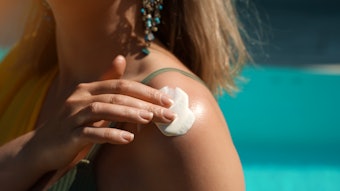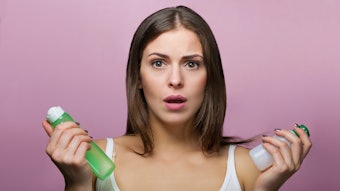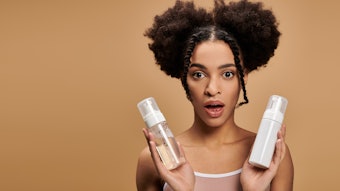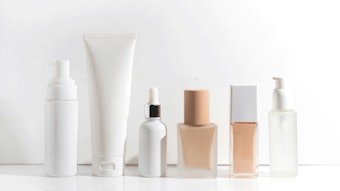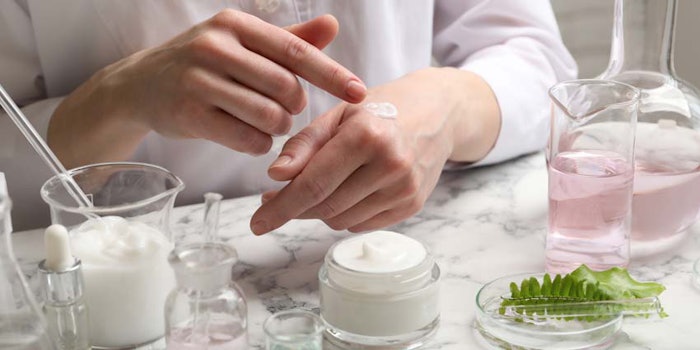
As of 2018, Americans have spent nearly $83 billion per year on cosmetic products,1 and an estimated 94% of Americans use a cosmetic skin care product at least once per month.2
As R&D experts know, cosmetics are made of numerous ingredients. These can be synthetic, natural and/or a combination of the two, and are formulated to form the final product to impart specific end use cosmetic benefits.
What functions do cosmetics serve? As set forth in the Food, Drug and Cosmetic Act of 1976, the U.S. Food and Drug Administration (FDA) defines cosmetics as: “articles intended to be rubbed, poured, sprinkled or sprayed on, introduced into, or otherwise applied to the human body ... for cleansing, beautifying, promoting attractiveness or altering the appearance.”3, 4 In contrast, pharmaceuticals are defined by the FDA as: “articles intended for use in the diagnosis, cure, mitigation, treatment or prevention of disease in man or other animals; and articles (other than food) intended to affect the structure or any function of the body of man or other animals.”5
So by definition, cosmetic products are not intended to produce a systemic biological effect, although some local biological effects may occur. Cosmetics also are not designed to diagnose or treat any medical condition. As such, cosmetic products are expected to be mild and the ingredients used should produce very low risk to consumers.
A cosmetic toxicologist can provide a clear-eyed view of the potential hazards and quantifiable risks of a product based on its composition. This primer briefly explains how.
Adverse Events
Although rare, individuals who use cosmetics may experience adverse events ranging from slight tingling sensations or redness to more severe allergic reactions. These events may result from exposure to cosmetic ingredients or may be a result of the many additional chemicals with which they come into contact in their daily lives.
For instance, some individuals may take prescription drugs or have underlying conditions or diseases that predispose them to interactions with cosmetics. Additionally, some may have had their immune response primed against given ingredients common to cosmetics, causing an allergic reaction with only the latest exposure.
See related: Solving Sensitivity; In vitro Assays for Sensitive Skin
A proper evaluation of the chemicals in a product and the product itself should account for how a product is intended to be used.
To parse out whether an adverse event is caused by a cosmetic product or something else, a cosmetic toxicologist will investigate the nature of the cosmetic, including the ingredients used and how they could interact in the final product. They also will evaluate the specific levels of each ingredient and each chemical that makes up the ingredient, if available, and compare them with previously studied acceptable use limits. Also, if possible, the toxicologist will evaluate data on the entire mixture or data from highly related mixtures to look for potential interactions between ingredients.
Additionally, the toxicologist will look for impurities in the cosmetic ingredients and determine how much of these chemicals might be present. Impurities have many forms. They could be unintentionally present in the final product; i.e. the heavy metals arsenic, lead and mercury. Impurities could also be residual solvents or even decomposition products of the ingredients present, such as small pieces of a larger chemical.
Hazard vs. Risk
Although they sound similar, hazard and risk have specific definitions from a toxicology perspective. As most cosmetic R&D experts will know, a hazard is a potential source of danger or harm. All chemicals in existence have the potential to cause health problems or adverse events of some kind in humans.6
Identifying the possible danger or harm posed by a cosmetic ingredient is referred to as hazard analysis. Hazard analysis is performed by a toxicologist and includes a description of organs most susceptible to harm from the ingredient. Notably, identifying a hazard for a given chemical, such as skin irritation, identifies only the type of potential adverse event and does not indicate the likelihood of that specific event occurring. Thus, listing only the hazards for all chemicals in a cosmetic formula is misleading in terms of communicating the actual safety of the cosmetic product.
Identifying a hazard for a given chemical, such as skin irritation, identifies only the type of potential adverse event and does not indicate the likelihood of that specific event occurring.
A risk is the likelihood that a specific hazard will occur. Risk has two components: hazard and dose (i.e., the level of exposure). To quantify a risk, the hazard, dose and exposure must all be considered in a formal process termed risk assessment. This assessment is also performed by toxicologists.
A typical cosmetic product contains many ingredients. The hazard and dose of each, as part of that mixture, is considered in the risk assessment in order to determine if the collective risk of using that product is too high. If all ingredients in the product exist at acceptable usage levels for the intended exposure, then that mixture may be defined as low risk.
Often, further testing is carried out on the final product, rather than just the ingredients, to ensure the product truly exhibits low risk and is acceptable for use. That is because complex mixtures may have properties that result from ingredients interacting.
In summary, even if an ingredient is highly hazardous, if the dose is low enough so as not to cause harm, then there is little risk of producing an adverse health event. Similarly, if the organ or organs of concern identified in the hazard analysis are not exposed to the cosmetic ingredient, then there is also little to no risk of an adverse health event.
See archived: 3 Skin Sensitization Tests to Meet EU Mandate
Endpoints of Concern
Endpoints of concern are adverse health or safety issues (i.e., disease or pathology) that may arise from the use of a product. These can be identified in numerous ways including laboratory studies or computational methods, but identification is important in considering how that ingredient could be used in a cosmetic product.
In cosmetic toxicology, several relevant endpoints exist for evaluating the risk of an ingredient (SCCS/1602/18). These endpoints include dermal and ocular corrosion and/or irritation, and the ability of a chemical to cause an allergic reaction when applied to the skin, or skin sensitization.
For certain risks, the ability of a compound to be absorbed or to penetrate the skin must be considered. If the compound can enter the body through ingestion or dermal absorption, the metabolism, distribution throughout the body, and excretion of the compound must also be considered. An important toxic endpoint is understanding whether the compound is a mutagen, genotoxin or carcinogen—both for its acceptable use and for regulatory labeling purposes. Other concerns may be important, depending on the product type and the ingredients used; these can be identified and addressed by the assessing toxicologist.
Authoritative Bodies and Scientific Literature
There are several governmental and non-governmental bodies or agencies across the world that provide scientifically sound guidance for determining the hazard and risk potential of cosmetic ingredients. These authoritative bodies are essential since they provide the initial literature review of the numerous new or reformulated ingredients that reach this industry.
In the United States, compounds used for cosmetics are reviewed by the Cosmetic Ingredient Review (CIR) expert panel, which is a non-government organization. In Europe, the review of consumer and cosmetic ingredients and their compounds occurs under the authority of the European Chemicals Agency (ECHA), which is overseen by the European Union. The European Union also oversees the Scientific Committee on Consumer Safety (SCCS), which writes definitive opinions on cosmetic ingredients.
Even if an ingredient is highly hazardous, if the dose is low enough so as not to cause harm, then there is little risk of producing an adverse health event.
Intended Product Use and Potential Misuse
When considering the acceptable use and/or toxicity of a cosmetic product, it is essential to understand the intended use for the product (SCCS1602/2018).7 For example, a hair coloring product is not intended to be used every day and is rinsed off after a brief exposure. Thus, the recommended exposure to the chemicals in the product might be 15 min, every 30-60 days, to minimize the risk of an adverse health endpoint.
In this scenario, evaluating the toxicology of the hair coloring product assuming daily use or a leave-on application would be misleading to determine its potential risk. Thus, a proper evaluation of the chemicals in a product, and the product itself, should account for how a product is intended to be used.
See related: Method Designed to Assess Aggregate Exposure to Phthalates
As a final consideration for risk, a toxicologist can assess the potential or likely misuse of a product (SCCS/1602/18).7 The most likely potential misuse may not always be intentional. For example, consider a lip color product. Intended for application to the lips, the product is in close proximity to the mouth and some of the product may be ingested inadvertently. Thus, the chemicals present must be acceptable for ingestion even if, worst-case scenario, 100% of the product was ingested.
In addition, lip colors are sometimes used in other locations to enhance existing colors, such as on the cheeks or just below the eyes. Given this type of application, ocular irritation might need to be considered when evaluating a formula. Or, a strong warning label may be needed on the package cautioning users to avoid eye area application.
Summary
Many considerations go into evaluating whether a cosmetic product may have harmed an individual. A cosmetic toxicologist can provide a clear-eyed view of the potential hazards and quantifiable risks of a product based on its composition. The forensic cosmetic toxicologist will then compare the observed adverse event to the causal mechanism of action of the ingredients present to determine if the claim has merit. As a final step, the forensic toxicologist will look at all other possible exposures or medical history to identify likely alternative causes for the adverse event.
